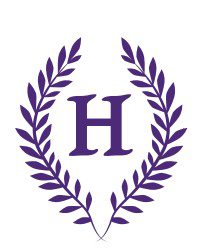Religious Education and Assemblies
Religious Education
Our RE lead is Mrs J Saggers.
Our RE curriculum encourages pupils to adopt a reflective approach through their study of living faiths. Using the Hampshire Agreed Syllabus, Living Difference, we aim to develop the children’s understanding of some of the central issues, questions and experiences which have played a major role in the spiritual life of humankind. Parents have the right to withdraw their children from the RE curriculum but are asked to contact the Headteacher in the first instance. A copy of the Agreed Syllabus may be viewed in school.
Religious Education is taught on PPA afternoons by Mrs Saggers and Mrs Sarney (Year 3) and we believe that this dedicated time helps to ensure that this aspect of the curriculum provides many opportunities to support our school aims and values.
Religious Education Curriculum Statement
INTENT
At Heatherside Junior School, we are committed to fostering confident, independent, and valued learners through our Religious Education (RE) curriculum. We follow the Living Difference IV syllabus, the agreed framework for RE in Hampshire. As children progress through each unit, they develop key learning skills, which include communicating, applying, inquiring, contextualising, and evaluating. Over their time at Heatherside, children explore Christianity, Judaism, and Islam, with a particular focus on Sikhism through a special RE day each year. They also engage in discussions about key religious festivals and events during assemblies. All of this enables them to gain a deeper understanding of religious beliefs and practices.
We encourage children to ask questions, share personal experiences, and respect the diverse beliefs of others. By examining the different ways people view the world through the lens of religion, children will develop a greater respect for diversity while recognising common values shared across faiths. They will build confidence in expressing their views, take responsibility for understanding different perspectives, and become more independent thinkers in their journey of religious learning.
IMPLEMENTATION
• Planning follows the structure of the Living Difference IV Syllabus and incorporates resources from HIAS to ensure a broad, engaging, and thoughtful RE experience.
• Units of learning are carefully sequenced to build on prior knowledge, including from our link Infant School and develop key concepts progressively over time.
• Through a clear teaching cycle, children are supported to understand the key skills of each lesson, enabling them to develop both their knowledge and understanding of religious concepts.
• Children use their personal experiences as a starting point for learning and engage in religious contexts, communicating and evaluating what they have learnt with respect for the beliefs of others.
• In Years 3 and 4, the emphasis is on 'describing' religious concepts, while in Years 5 and 6, it shifts to 'explaining' these concepts. Learning intentions are structured to support children in developing these skills.
• A wide range of resources are used to captivate children's interest, including Active Inspire notebooks, video clips, Bible story animations, first-hand peer experiences, photographs, and religious artefacts.
• Enrichment opportunities, such as visits to local places of worship, visitors to school, and links with our local church, provide further opportunities for learning.
•The learning outcomes vary from; written work, discussion, drama to art activities to help bring religious stories and concepts to life.
IMPACT
Children at Heatherside Junior School will emerge as confident, respectful, and inquisitive learners. They will have developed the independence to ask thoughtful questions, engage in meaningful discussions, and share their experiences with respect for diverse viewpoints. Through their religious education, children will recognise and appreciate the different beliefs people hold, while confidently articulating the main beliefs and practices of the religions they have studied. They will take responsibility for their own learning and be valued contributors to a respectful and open community.
Collective Worship (Assembly)
An assembly is held each day, which is broadly Christian but non- denominational in approach. This is an important part of the day, when classes reflect together as a community. Parents have the right to withdraw their child from the Collective Worship (religious) element of assembly and, again, are asked to contact the Headteacher to arrange this. We have a singing assembly ever Tuesday led by Mrs Field; on other days, children may have assembly in class or together in the hall led by a member of staff. Fridays are our Celebration Assemblies.
